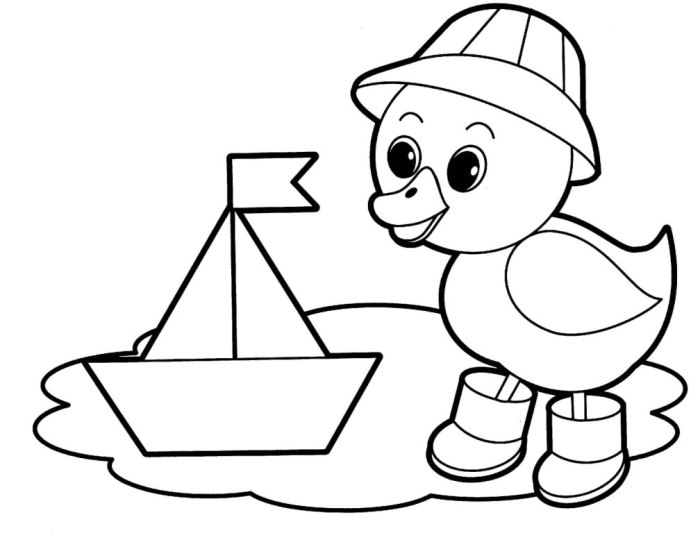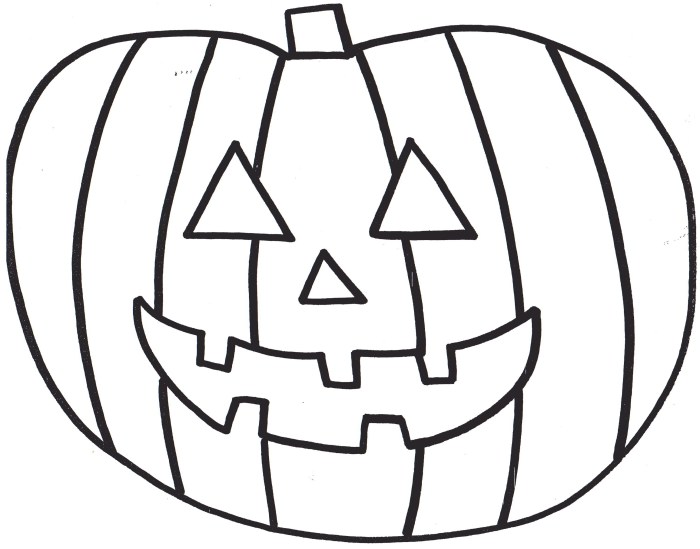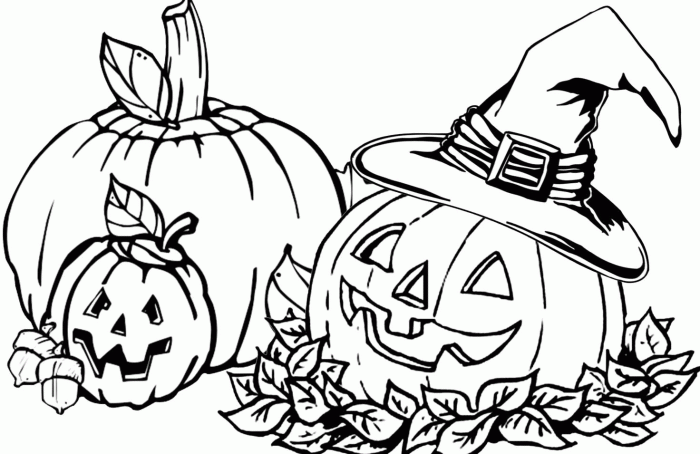Free Online Halloween Coloring Pages for Kids
Popularity and Trends: Free Online Halloween Coloring Pages For Kids
Free online Halloween coloring pages for kids enjoy significant popularity, particularly in the weeks leading up to Halloween. This surge in demand reflects the holiday’s enduring appeal and the continued relevance of coloring activities as a fun and engaging pastime for children. The accessibility of digital resources, combined with the ease of printing, contributes significantly to this popularity.The seasonal trends in searches for these coloring pages are sharply defined.
Search volume tends to be relatively low throughout the year, spiking dramatically in September and October, peaking just before Halloween itself. This pattern is consistent across various search engines and online platforms, reflecting a strong correlation between the holiday’s approach and user interest.Halloween coloring pages hold their own, if not exceed, the popularity of other holiday-themed coloring pages in many cases.
While Christmas and Easter coloring pages also experience seasonal peaks, the concentrated nature of Halloween’s celebration results in a more intense, albeit shorter, period of high demand for Halloween-themed content. This concentrated demand is likely due to the unique and often spooky imagery associated with Halloween.
Free online Halloween coloring pages offer a spooky delight for kids, but sometimes simpler designs aren’t enough to satisfy their creative hunger. For those who crave more intricate details, you might want to explore the amazing selection of detailed coloring pages for kids available online. Then, once you’ve worked on those complex designs, you can return to the fun simplicity of those free online Halloween coloring pages, ready to tackle even more creative projects.
Popular Halloween Coloring Page Themes
Several themes consistently appear among the most popular Halloween coloring pages. These themes tap into the common imagery associated with the holiday and resonate with children’s interests. The enduring appeal of these themes contributes to their continued popularity year after year.Pumpkins, a quintessential symbol of Halloween, are a consistently popular theme. Coloring pages featuring jack-o’-lanterns, carved pumpkins with spooky faces, or simply realistic pumpkins are frequently sought after.
These pages often incorporate details like intricate carvings or whimsical expressions, adding to their appeal. Ghosts, another classic Halloween element, are also consistently popular. These pages range from friendly, cartoonish ghosts to more spooky, ethereal figures. The variety of designs allows for different age groups and levels of artistic skill. Witches, with their iconic hats and broomsticks, are a third recurring theme.
These pages may depict witches brewing potions, flying on broomsticks, or engaging in other Halloween activities. Often, the witches are portrayed in a whimsical, rather than frightening, manner to appeal to younger children. Other popular themes include bats, black cats, spiders, haunted houses, and candy corn, each offering a unique visual representation of the Halloween spirit.
Website Design and User Experience
A successful website for children’s Halloween coloring pages requires careful consideration of user interface (UI) design to ensure ease of navigation and a positive user experience. Children have different needs and expectations than adults when it comes to online interactions, and the design should reflect this. A well-designed website will encourage engagement and repeat visits.The primary goal is to create a visually appealing and intuitive website that is easy for young children to use independently.
This involves simplifying navigation, using clear visual cues, and minimizing distractions. A cluttered or confusing website will quickly frustrate a child, leading to abandonment.
Intuitive Navigation and Clear Labeling
Clear labeling and intuitive organization are crucial for a positive user experience. Coloring pages should be categorized logically, perhaps by theme (e.g., pumpkins, ghosts, witches) or difficulty level. Large, easily identifiable buttons and icons should be used for navigation, avoiding small text or complex menus. The use of bright, Halloween-themed colors and imagery can enhance engagement and make the website more appealing to children.
For example, instead of a simple text link like “Download,” a button featuring a playful ghost icon with the word “Print!” would be more effective. Each coloring page should have a clear title and a preview image, allowing children to quickly identify the content they are interested in.
Effective Website Features for Enhanced User Experience
Several features can significantly enhance the user experience. A prominent “Print” button on each coloring page is essential, allowing children to easily print their chosen designs. Zoom functionality allows children to see the details of the coloring page more clearly, especially on smaller screens. The ability to save coloring pages digitally could be a valuable addition, allowing children to return to their work later.
A simple, child-friendly search bar could enable quick access to specific coloring pages. The absence of intrusive advertising and pop-ups is also crucial to maintaining a positive experience. Consider adding a simple feedback mechanism, perhaps a “thumbs up/thumbs down” button, to gauge the effectiveness of the design.
Comparison of Halloween Coloring Page Websites
The following table compares the features of three hypothetical websites offering free Halloween coloring pages. These are illustrative examples and do not represent actual websites.
| Website | Navigation | Printing Options | Additional Features |
|---|---|---|---|
| SpookyFunColors.com | Simple, icon-based navigation; clear categories | One-click print button on each page; PDF download option | Zoom functionality; color palette suggestions; simple search |
| HalloweenColoringKingdom.net | Categorized by theme and difficulty; uses large, colorful buttons | Print and download options; option to select page size | Coloring page suggestions based on previous selections; saving functionality |
| PumpkinPatchPrints.org | Basic navigation; limited categories | Print option only; no download | No additional features |
Coloring Page Content and Design

Creating engaging and appealing Halloween coloring pages requires careful consideration of artistic style, thematic diversity, and the incorporation of educational elements. A well-designed coloring page will not only entertain children but also stimulate their creativity and learning.The choice of artistic style significantly impacts the overall feel and appeal of the coloring page. Different styles cater to various age groups and preferences.
Artistic Styles for Halloween Coloring Pages
Halloween coloring pages can benefit from a variety of artistic styles, each offering a unique aesthetic. Cartoonish styles, with their simplified features and exaggerated expressions, are generally well-suited for younger children. Realistic styles, on the other hand, can appeal to older children who appreciate more detail and anatomical accuracy. A spooky style, employing darker tones and more dramatic features, can be appropriate for older children who enjoy a thrilling aesthetic.
The key is to match the style to the target audience.
Benefits of Diverse Characters and Themes
Including diverse characters and themes in Halloween coloring pages fosters inclusivity and broadens appeal. Representing a range of ethnicities, abilities, and body types ensures that all children can see themselves reflected in the coloring activities. Similarly, incorporating various Halloween themes beyond the typical ghosts and witches, such as friendly skeletons, cute pumpkins, or adorable black cats, can spark interest and creativity in children.
This diversity enhances the overall enjoyment and educational value of the coloring pages.
Unique Halloween Coloring Page Designs
A selection of unique designs can greatly enhance the appeal and longevity of a collection of Halloween coloring pages. Offering variety keeps children engaged and returning for more.
- Pumpkin Patch Parade: This design features a lively procession of anthropomorphic pumpkins, each with a unique personality and costume. Pumpkins are dressed as various Halloween characters, such as pirates, superheroes, and princesses. The background shows a vibrant autumnal landscape.
- Spooky Haunted House Maze: A detailed haunted house forms a maze, with various spooky characters (ghosts, bats, spiders) hidden within its rooms and corridors. Children can color the house and then trace a path through the maze.
- Friendly Monster Family Portrait: A heartwarming scene depicting a family of friendly monsters engaging in everyday activities, such as reading, playing games, or having dinner. This design promotes positive feelings towards often-feared creatures.
- Underwater Halloween: An unusual setting for Halloween, this design features friendly sea creatures dressed in Halloween costumes. A sunken treasure chest filled with candy could add to the underwater theme. The background is an ocean scene with coral and seaweed.
- Halloween Alphabet/Numbers: This design integrates the alphabet or numbers into a Halloween scene. For example, each letter could be represented by a Halloween-themed character or object (A for apple, B for bat, etc.), while numbers could be incorporated into a counting game within the scene.
Incorporating Educational Elements
Integrating educational elements into Halloween coloring pages transforms them into engaging learning tools. This approach enhances the overall value and appeal of the activity.The seamless integration of numbers, letters, and shapes into the designs can subtly enhance a child’s learning without feeling like a lesson. For instance, a coloring page featuring a haunted house could incorporate numbered rooms or windows, encouraging children to count as they color.
Similarly, letters can be subtly integrated into banners or signs within the Halloween scene. Shapes can be incorporated through the design of objects such as pumpkins (circles, triangles) or bats (triangles). These subtle additions create a fun and engaging learning experience.
Illustrative Examples

To further illustrate the design considerations for our Halloween coloring pages, let’s delve into specific examples, showcasing diverse styles and complexity levels suitable for various age groups. These examples highlight the balance between engaging visuals and ease of coloring for young children.
Friendly Ghost Coloring Page, Free online halloween coloring pages for kids
This coloring page features a friendly ghost, designed with a simple, approachable style. The ghost is depicted with large, round eyes and a wide, welcoming smile, instantly conveying a non-threatening, playful persona. The line thickness is consistently medium, ensuring easy coloring without overwhelming fine motor skills. The line art is clean and uncomplicated, avoiding intricate details that might frustrate younger children.
The suggested color palette includes soft pastels like light blues, lavender, and pale yellows for the ghost’s body, accented with brighter, more vibrant colors for smaller details like a tiny bow tie or a friendly jack-o’-lantern held in its hands. The overall style is whimsical and charming, aiming for a gentle, inviting aesthetic.
Playful Pumpkin Carving Scene Coloring Page
This coloring page showcases a lively pumpkin carving scene. The composition centers on a large, round pumpkin, strategically positioned to allow ample space for children to color in the intricate details of the carved design. Smaller pumpkins, scattered around the main pumpkin, add depth and visual interest. These smaller pumpkins can have simpler designs, contrasting with the more detailed carving on the central pumpkin.
The line art uses a variation in line thickness; thicker lines define the main shapes of the pumpkins, while thinner lines detail the carved features. The color palette encourages creativity, allowing for various shades of orange, brown, and green for the pumpkins and leaves. The background can incorporate a simple, yet appealing pattern, such as a subtle texture mimicking hay or autumn leaves, without overpowering the main subject.
Whimsical Witch’s Cauldron Coloring Page
This coloring page presents a whimsical witch’s cauldron bubbling with colorful potions. The cauldron itself is depicted with a slightly rounded, cartoonish shape, and the bubbling potion is represented by dynamic swirls and steam. The witch herself might be subtly incorporated, perhaps a small silhouette or a witch’s hat peeking from behind the cauldron. The line art features a combination of thick and thin lines, providing both structural definition and detail.
The thicker lines Artikel the main shapes, while thinner lines create texture within the potion and details on the cauldron. The color palette includes vibrant, magical hues such as purples, greens, oranges, and blues for the potion, contrasting with a darker, rustic brown or black for the cauldron itself. The overall style leans towards a playful, slightly spooky aesthetic.
Spooky Haunted House Coloring Page
This coloring page portrays a spooky, yet charming haunted house. The house is depicted with exaggerated features – tall, narrow windows, a slightly crooked roofline, and perhaps a friendly-looking ghost floating nearby. The line art uses a variety of line thicknesses to create depth and shadow. Thicker lines are used for the main structure of the house, while thinner lines create details such as window panes, cobwebs, or bat silhouettes.
The color palette is slightly darker than the other examples, using muted purples, grays, and blacks to create a spooky atmosphere, but still maintaining a lighthearted feel. A full moon in the background adds to the atmospheric quality. The overall style is spooky but not frightening, aiming for a balance between fun and Halloween’s traditional themes.
Essential FAQs
Where can I find high-resolution printable pages?
Many websites offer high-resolution downloads; look for options that specify “high-resolution” or “300 DPI” in their descriptions.
Are there coloring pages suitable for toddlers?
Yes! Look for pages with simpler designs and thicker lines, easier for little hands to manage.
Can I use these coloring pages for commercial purposes?
Generally, no. Unless the website explicitly states otherwise, these are for personal use only. Check the terms of use.
What kind of printer works best for these pages?
Any standard inkjet or laser printer will do. For best results, use thicker paper to avoid bleed-through.















